Aww-inspiring photos: Meet Harry Whittier Frees, the man who shot Caturday photos a hundred years early
posted Saturday, May 21, 2016 at 5:59 AM EST
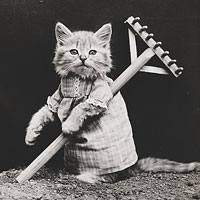
While you may never have heard his name, it's certainly possible you've seen the work of Harry Whittier Frees. The photographer, known for his anthropomorphic portraits of animals, was born in Reading, Pennsylvania in 1879.
His timeless photos evoke a wide variety of emotions and display timeless characteristics. Seeing an animal in human clothing often elicits a smile or perhaps an audible "aww" from the viewer, but anyone who has spent much time around animals knows how difficult it can be to get them to pose without upsetting them. I've got to assume that Frees experienced his fair share of bites and scratches.
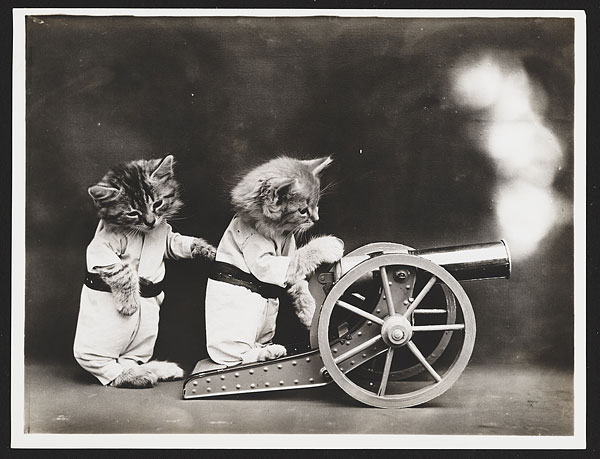
Frees got his start taking portraits of animals when at a family birthday celebration someone thought it would be fun to place a birthday hat on a cat. Frees captured an image and people loved it so much that he took it to a postcard printer. The printer wanted more images, so that's exactly what happened. During a period of just over 50 years, Frees created images of clothed and posed animals that spanned postcards, magazines, calendars, and even books.
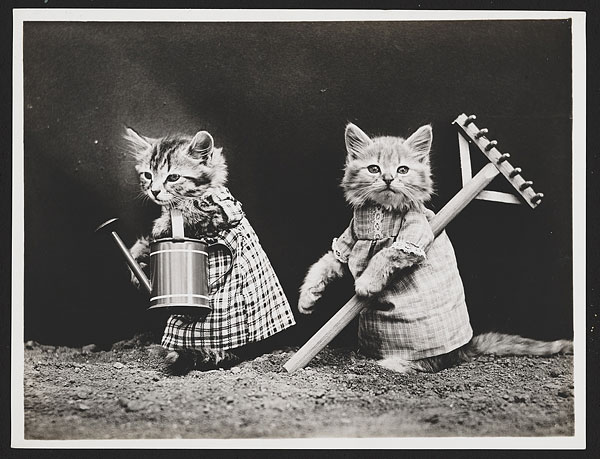
His subjects were initially clothed quite simply, adorned with hats, bowties and the like until roughly a decade into his career when Frees started creating full wardrobes and sets for his four-legged models.
Of every 100 negatives that he captured, Frees had to discard roughly 70 of them. His work was so tiring and difficult that he only captured images for three months of the year, and spent the other nine resting and coming up with new ideas. His only help was from his housekeeper who sewed the costumes for the animals. If this sounds like it would be a difficult photographic task now, imagine doing it during Frees' era with the equipment he had at his disposal.
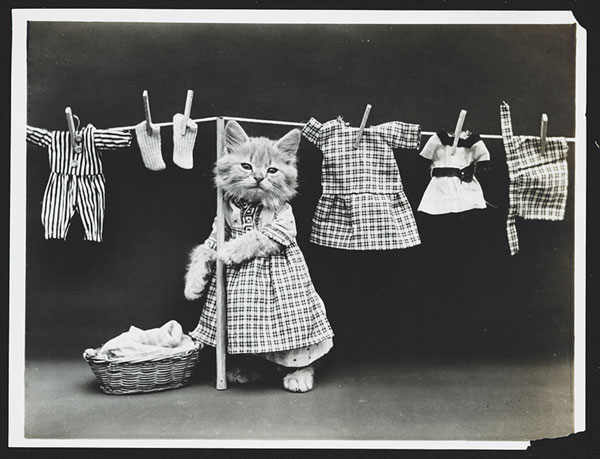
Animals were sourced from neighbors or rented from local pet stores. In a 1937 issue of Life, Frees talked about a short-haired cat Rags who he said could hold a pose for minutes at a time. His feline and canine subjects were occasionally replaced with pigs, rabbits, and chicks.
Frees was often questioned about his methods and whether or not he had to drug or otherwise harm any of his subjects, but he always maintained that they were well-treated and he only had to employ a lot of patience to capture his famous images.
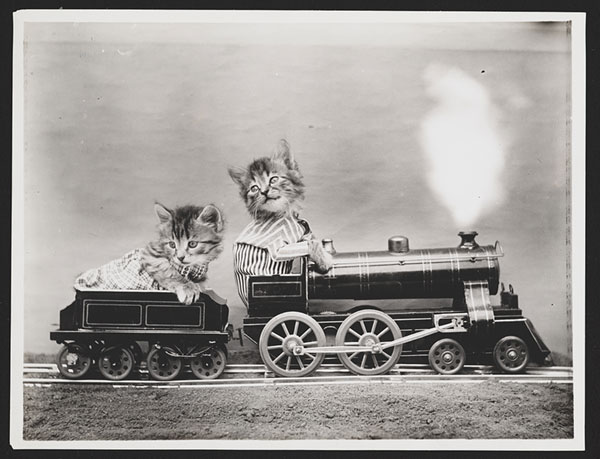
Throughout his career and even after his death, Frees' work graced the pages of many books and advertisements. His postcard business was also very successful. Despite his success, though, his life was not as joyous as one might expect. Most of his money and time was spent caring for his parents.
When they passed away in the 1940s, Frees moved to Florida. Having never married, he kept to himself. In 1953, Frees was diagnosed with cancer and shortly thereafter committed suicide at age 74. His obituary made no mention of Frees' half century of work and due to his lack of money at the time of his death no provisions for a final resting place were made.
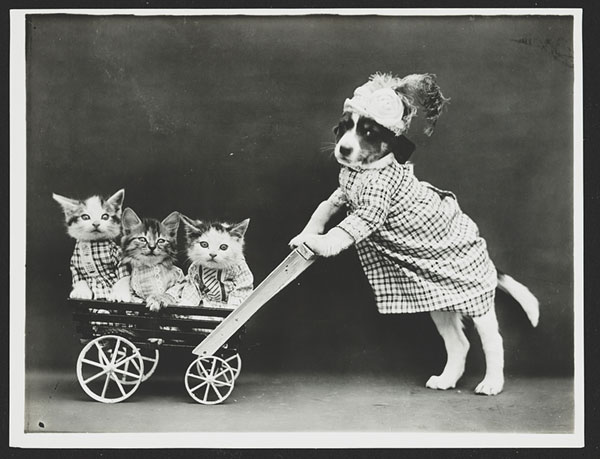
You can view more of Harry Whittier Frees' animal images at the Library of Congress.
(Seen via Mashable with additional information from NPR, Pennsylvania Heritage and America Comes Alive. Index image: Making a date, 1914)